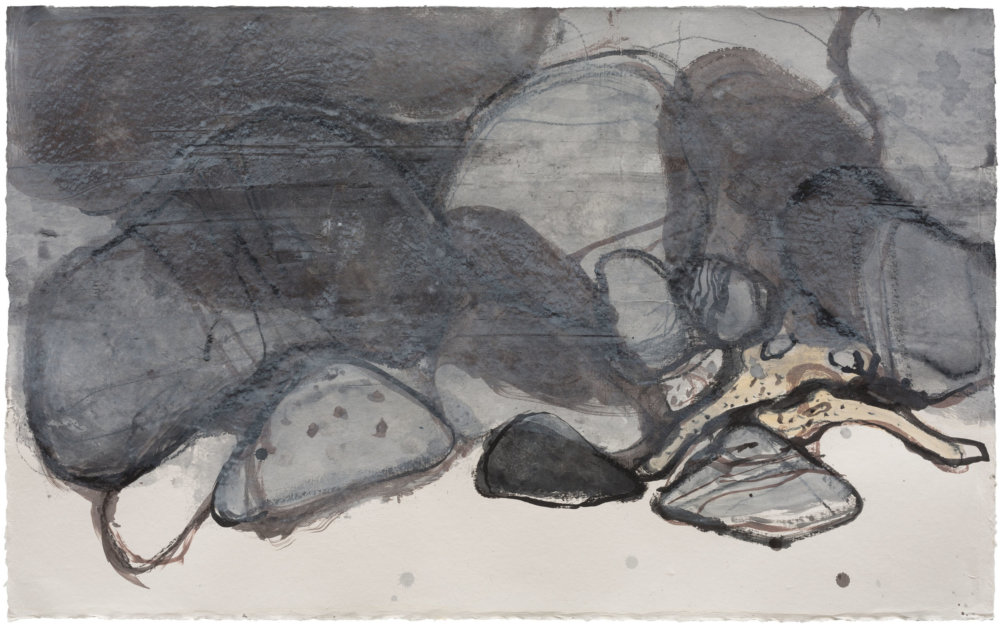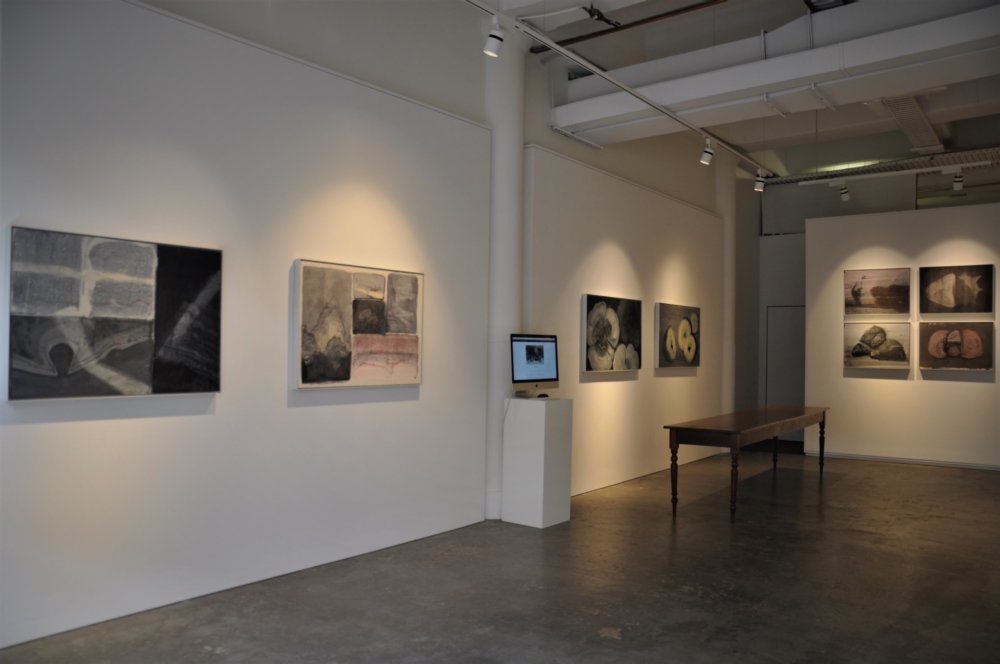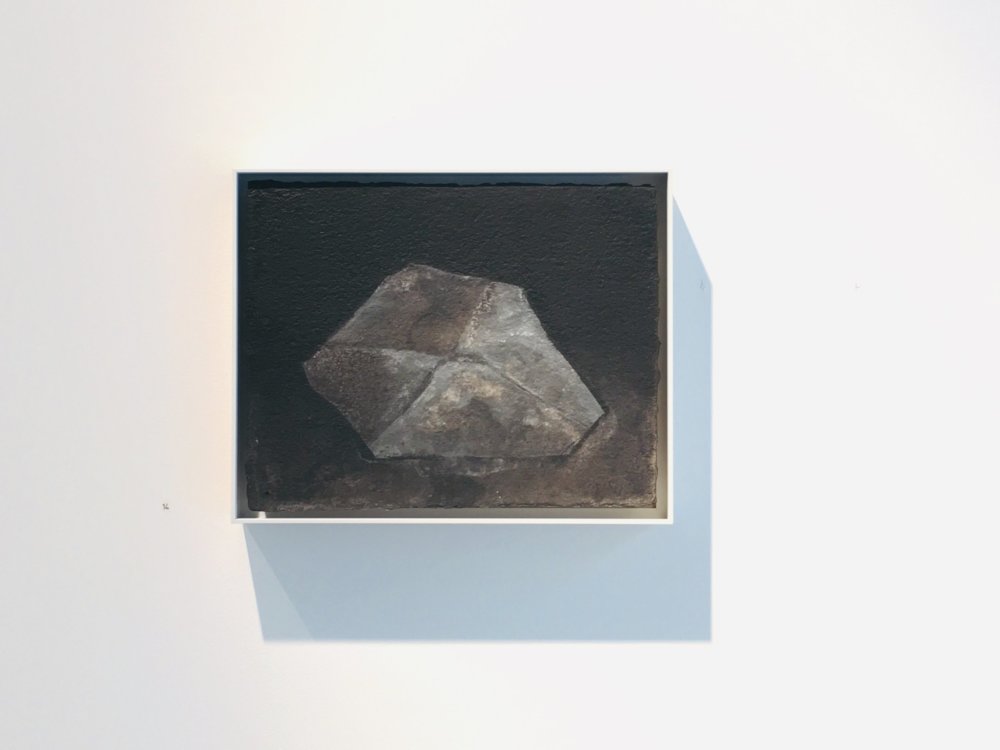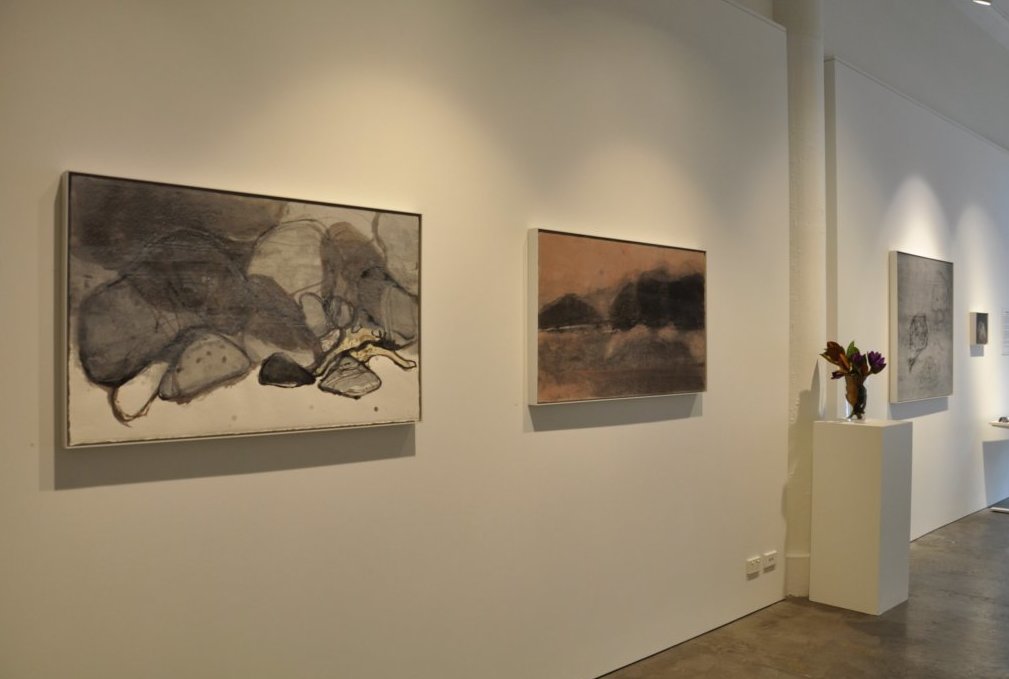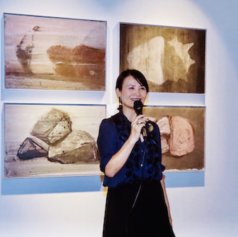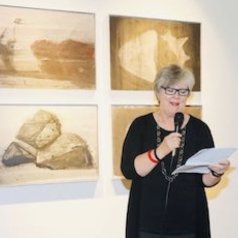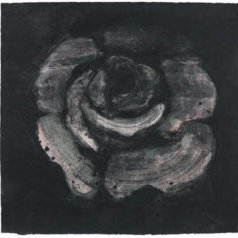I met Gao Ping on my very first trip to China, and hers was one of the first studios I entered. It was March, and still very cold in Beijing. I walked into the studio that she shared with her husband, fellow artist Yong Li, and smelled the heady intoxicating fumes of oil paint, and saw these dark, brooding paintings stacked around the walls and laid out on the floor, and beautiful ink works on fine Chinese xuan paper layered and rolled on benches. Gao Ping and her friend, the painter Hu Qinwu, were really my first introduction to the practice of artists who were graduates of the oil painting department at the Central Academy of Fine Arts with its great academic tradition of French and Russian figurative painting, and yet were managing to straddle what is in many ways a false dichotomy between east and west, incorporating elements of Chinese painting and calligraphy traditions into their contemporary works.
One of the things that I instantly loved about Gao Ping’s paintings is that there is nothing overtly showy – there is no excess, no dramatics, and absolutely no pretentiousness. Like the artist herself, her work is quiet, subtle and very sensitive to nuances of light and dark, form and void, space and shape. At the same time, I know that Gao Ping strives to make her work strong, and I believe that when you look at the paintings on the wall of the gallery tonight you will agree that she has succeeded.
On that and many subsequent studio visits over the last ten years, the other thing that I have come to love about her work is that she really knows how to use grey. I happen to be a person who loves grey and grisaille painting. Its subtlety is a wonderful thing – look for example at paintings in this exhibition such as ‘Fruits’, or at ‘Flower’ or ‘Stone 2’ and see how beautifully the grey washes are balanced and modulated with other tones and almost hidden colours.
Gao Ping believes that painting is like a secret language, creating mysterious layers that reveal themselves slowly to those willing to take the time to look carefully. And her work really does repay the long look. I have often described her to people as ‘the real deal’, an artist who makes work because she must. Her tenacity is evident in the years she spent applying to the competitive Central Academy of Fine Arts in Beijing. Her resilience and courage is demonstrated by the fact that she came from Shandong Province, where she had completed her undergraduate studies, to the frantically chaotic, constantly transforming city of Beijing, absolutely determined to study at the great Chinese art powerhouse, and ready to keep trying over and over again if necessary to be accepted into this notoriously difficult-to-enter art academy.
I especially loved the story she told me about how, when she was successfully admitted to the art academy she was desperately keen to avoid the particular studio of the oil painting department which taught the Russian painting methods: she told me that she couldn’t stand to paint like that, in shades of brown that she described as ‘like soy sauce’! Fortunately, even though back in the 1990s students had no choice and were simply allocated to a particular discipline and to the studio within that discipline, she escaped that fate!
When Gao Ping first arrived in Beijing from Shandong she was appalled at the noise and destructive power of the city, and its frantic dog-eat-dog atmosphere, the wholesale destruction as entire neighbourhoods were demolished in a frenzy of reconstruction, the relentless noise, the traffic, and the polluted air. Although she still lives and works in Beijing, with a studio in the more peaceful surroundings of Luoma Lake in the north of the city, she returns often to the rural landscapes of Shandong and finds peace and solace in the natural world.
In this show we see the mountains, rocks and other natural forms observed and remembered from her travels, but also the quirkiness and humour that I love in her work as well – the slightly out-of-left-field observations of the everyday that are so evident in her ink paintings of tiny objects such as electric fans, wobbly old furniture and discarded toys. Here we find that a powerpoint with trailing cords or a pair of knobbly feet are as worthy of the artist’s attention as a mountain landscape or a flower.
Her technique in these works is interesting and idiosyncratic – she draws quickly but then builds up layers over layers, creating a rich palimpsest of washes of ink and acrylic that are scraped back, drawn into, re-painted and scraped back again so that traces of ghostly forms beneath the surface become reminders of the artist’s physical gestures as she works in the studio. These works apply unorthodox combinations of materials. Thinned washes of acrylic are brushed over the Chinese ink underneath, and vice versa, in a process somewhat like a wax resist. The result is moody, atmospheric and subtle, with glimpses of objects or of landscapes seen through haze and mist. Gao Ping transforms the mundane – a rock, some fruit, a pile of chairs or a stack of boxes – into something mysterious and other-worldly. Sometimes subtle hints of colour underlie the dominant greys and blacks which remind us that Chinese ink is, after all, formed from soot.
Gao Ping says that for Chinese artists the traditions of ink painting are “like the ground under your feet”. She admires the early Qing Dynasty painter Ba Da Shanren, or Zhu Da, who famously observed that there were “more tears than ink” in his paintings. His expressive landscapes achieve a balance between stillness, space and closely observed detail, which Gao Ping returns to again and again. She describes his work as both sad and “calm in heart”, a description which equally applies to her own, which reveal her complete understanding of the very Chinese relationship between form and (apparently) empty space that is so characteristic of shan shui ink painting. Ba Da wrote this poem (on a wall, the story goes) in 1674.
Mountain and stream reflect the old country.
Flames of war recall a bygone homeland.
When will the plan to return be fulfilled?
Floating like a single reed I sail
These lines seem to me to encapsulate Gao Ping and her paintings, which combine the twin elements of beauty and melancholy.
Like many other contemporary Chinese artists, Gao is interested in Daoist philosophy and in the strange (to western minds) paradox of the harmonious relationship between apparent opposites, yin and yang, light and dark, form and space. Within each of Gao Ping’s paintings, there is is a complex interwoven relationship between eastern and western art histories and philosophies, but a visual language that is entirely her own.
So, it gives me great pleasure to congratulate Yeqin and her team at Vermilion Art on this most beautiful and subtle exhibition, and to thank her also for the opportunity to speak about Gao Ping tonight. Please enjoy the exhibition!
